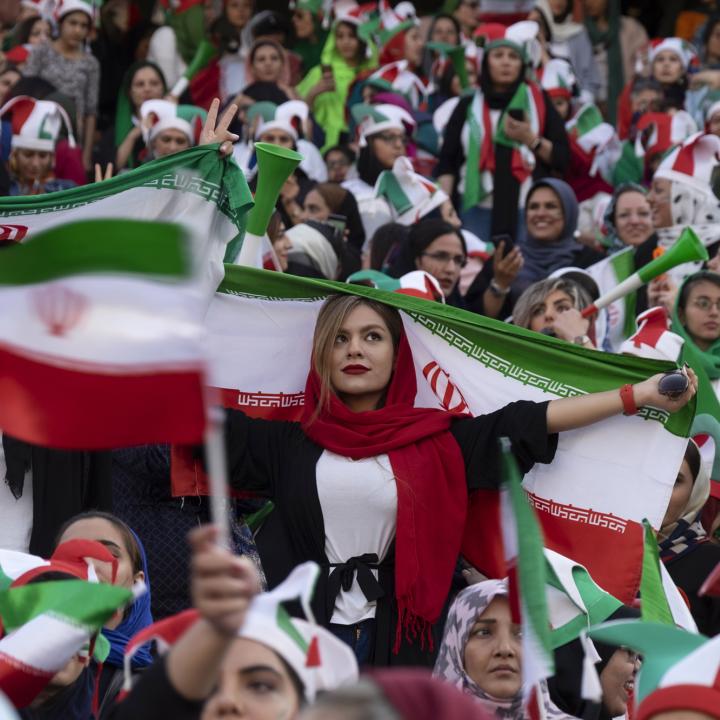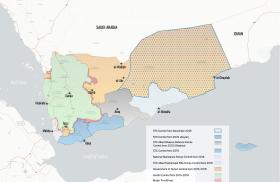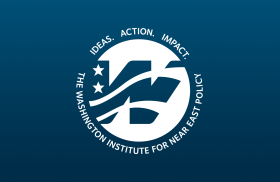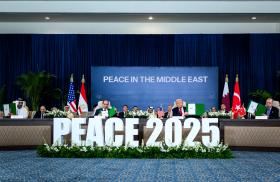
- Policy Analysis
- PolicyWatch 4075
How Iran’s Turn to Nationalism Affects U.S. Policy

The Supreme Leader and his domestic echo chambers have shown a remarkable shift in emphasis from religious authority to full-throated pre-revolutionary nationalism, and Washington should adjust its messaging accordingly.
On July 5—after twenty-four days without a public appearance, including the twelve spent at war with Israel—Supreme Leader Ali Khamenei showed up at what Iranian outlets are misleadingly calling a public setting, namely, a religious ceremony in a mourning hall. Had he continued to stay out of sight that day, there would have been much comment. After all, this was Ashura, customarily observed as the most sacred day of the Shia calendar and accompanied by huge street parades. Ashura marks the battle in which Imam Hussein was killed by the great power of the day, the Umayyad Caliphate, whose leader (Yazid) is depicted as supremely evil in holiday iconography. One might have thought Khamenei would draw parallels between that battle and today’s struggle against Israel and the United States, but he did no such thing. In fact, he did not speak at all—in contrast to his frequent addresses before large public audiences, attendance at the religious ceremony was tightly controlled.
Khamenei’s low-profile outing echoed his posture during Israel’s military campaign. Authorities offered no public word about where he was, conveniently forgetting a 2005 speech in which the Supreme Leader mocked U.S. leaders for “disappearing” after the September 11 attacks. “If a bitter experience happens to Iran,” Khamenei declared at the time, “we ourselves will don battle garb and stand ready to sacrifice.” Instead, he was nowhere to be seen, sparking rumors that his health was failing.
He did record three speeches for broadcast during the crisis—on June 13, June 18, and June 26—but they contrasted strikingly with his prewar speeches. For one thing, he appeared tired, dare one say feeble, during his June 26 address and seemed to get lost at times.
More important, the content of that third speech represented a huge shift from the past. Speaking on the first day of Muharram, a month particularly revered among Shia, he said exactly nothing about Muharram. Yet the original Persian version of his speech referred to “the nation” and “Iran” twenty times while mentioning Islam only once (sort of). His sole reference to God used the word “Parvadegar” rather than Allah, which is a very Persian way of saying “The Almighty” and extremely unusual for a cleric. Similarly, he began with “Salam” and “Dorud”—the first being the traditional Islamic greeting, and the second being the pre-Islamic greeting traditionally derided by the Islamic Republic’s core revolutionaries. He also emphasized that Iran “possesses an ancient civilization,” declaring, “Our cultural and civilizational wealth is hundreds of times greater than that of the U.S.” This statement was part of a lengthy paragraph in which not one word was said about Islam. The passage was particularly odd because Iranian clerics have long described the country’s pre-Islamic past as a time of ignorance and ridiculed those who glorify ancient Iran.
Another hint of Khamenei’s turn to nationalism surfaced when famed eulogist Mahmoud Karimi performed at the Ashura ceremony and Khamenei requested he sing “Ey Iran Iran”—a patriotic rather than religious song. The lyrics were modified for the occasion to include some references to Islam, but the request was in keeping with Khamenei’s unusually nationalist tone. (The song’s name is very similar to the de facto pre-revolutionary anthem “Ey Iran,” which, after not being heard for years, was played at large anti-Israel gatherings at Azadi Square and in front of state media.)
Why It Matters
These nuances merit close scrutiny because Khamenei’s speeches traditionally serve as important indicators of where the Islamic Republic is headed. In this case, his June 26 speech signaled a turn toward nationalism, and regime outlets swiftly and vigorously picked up the theme, toning down their references to religion and disseminating ubiquitous images of heroes from the pre-Islamic epic poem Shahnameh battling the enemy—in some cases using arrows shaped like missiles.
This nationalist focus has come at the expense of the Islamic Republic’s founding principle, the guardianship of the Supreme Jurist (velayat-e faqih). Next to nothing is being said about the people’s religious obligation to follow the Supreme Leader’s orders, raising questions about how important the post will be going forward even if Khamenei returns to his normally vigorous demeanor. For years now, various aspects of regime power have been shifting from the clerics to the Islamic Revolutionary Guard Corps, and Khamenei’s latest rhetorical theme embodies that trend. Further shifts could prove worrisome given that the IRGC seem less cautious than Khamenei. Yet public statements by military officials and other intriguing indicators suggest that some IRGC elements are more interested in wielding national power than projecting revolutionary values.
U.S. Policy Implications
In light of this apparent shift, the Trump administration should condition its approach to the Islamic Republic based more on a Persian nationalist mindset than any claimed Islamic identity. For instance, in thinking about its next nuclear steps, Tehran will likely be less concerned about past fatwas that supposedly prohibit the production of nuclear weapons. Instead, its decisions will be based more on what it deems best for defending the nation—a calculus that could lead the regime to accelerate rather than abandon the nuclear program given the proven shortcomings of its other national defense elements.
Similarly, Washington should be more aware of how its words and actions will be perceived through the filter of Iranian national pride and fears. In his June 26 speech, for instance, Khamenei made much about President Trump’s call for Iran to “surrender,” claiming it proved that America’s true agenda “isn’t about enrichment or the nuclear industry” but rather about defeating “the great country of Iran” and “insulting” its people.
To appeal to those who love Iran but detest the Islamic Republic, the administration should flesh out Trump’s calls to “make Iran great again” with real, widely publicized details about how the United States would work with the country if the two sides reach a new deal. Given Iran’s past disappointments about what the 2015 nuclear deal would bring, U.S. officials need to be quite specific about what they actually can do to return the country to normal trade, finance, investment, and travel arrangements—and, crucially, what Tehran must do to convince banks and other private entities outside U.S. government control that Iran is no longer too risky of a jurisdiction for such engagement. The latter effort will require Iranian officials to focus on decreasing corruption, halting the arbitrary arrest of foreigners, and increasing transparency in multiple sectors. More problematic but also useful would be discussions about how regional security could lead to security for Iran—that is, if Tehran takes real steps to reduce its threats to neighbors, this could be met by reassuring steps from others.
Patrick Clawson is the Morningstar Senior Fellow at The Washington Institute and director of its Viterbi Program on Iran and U.S. Policy.



